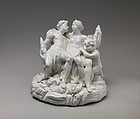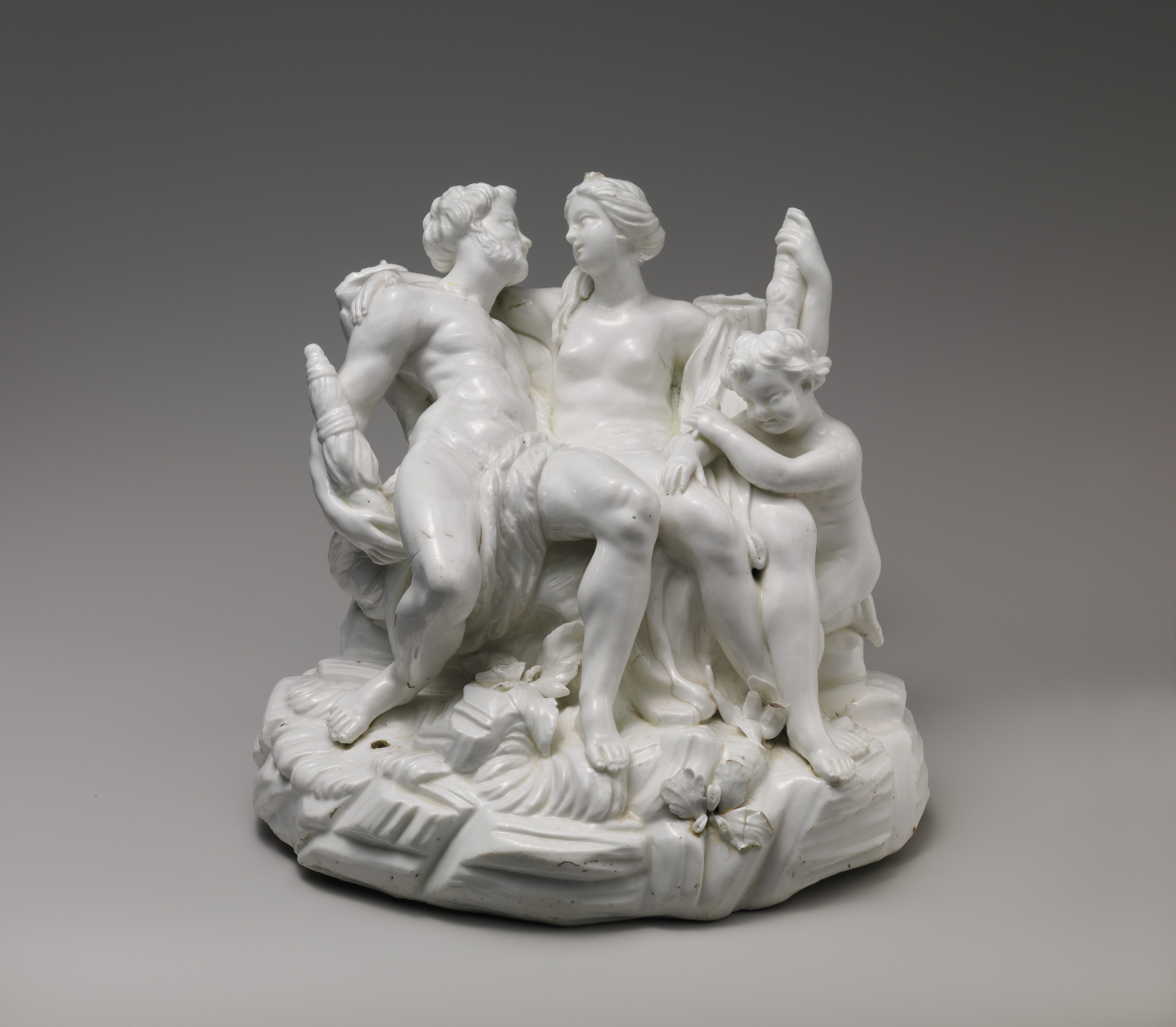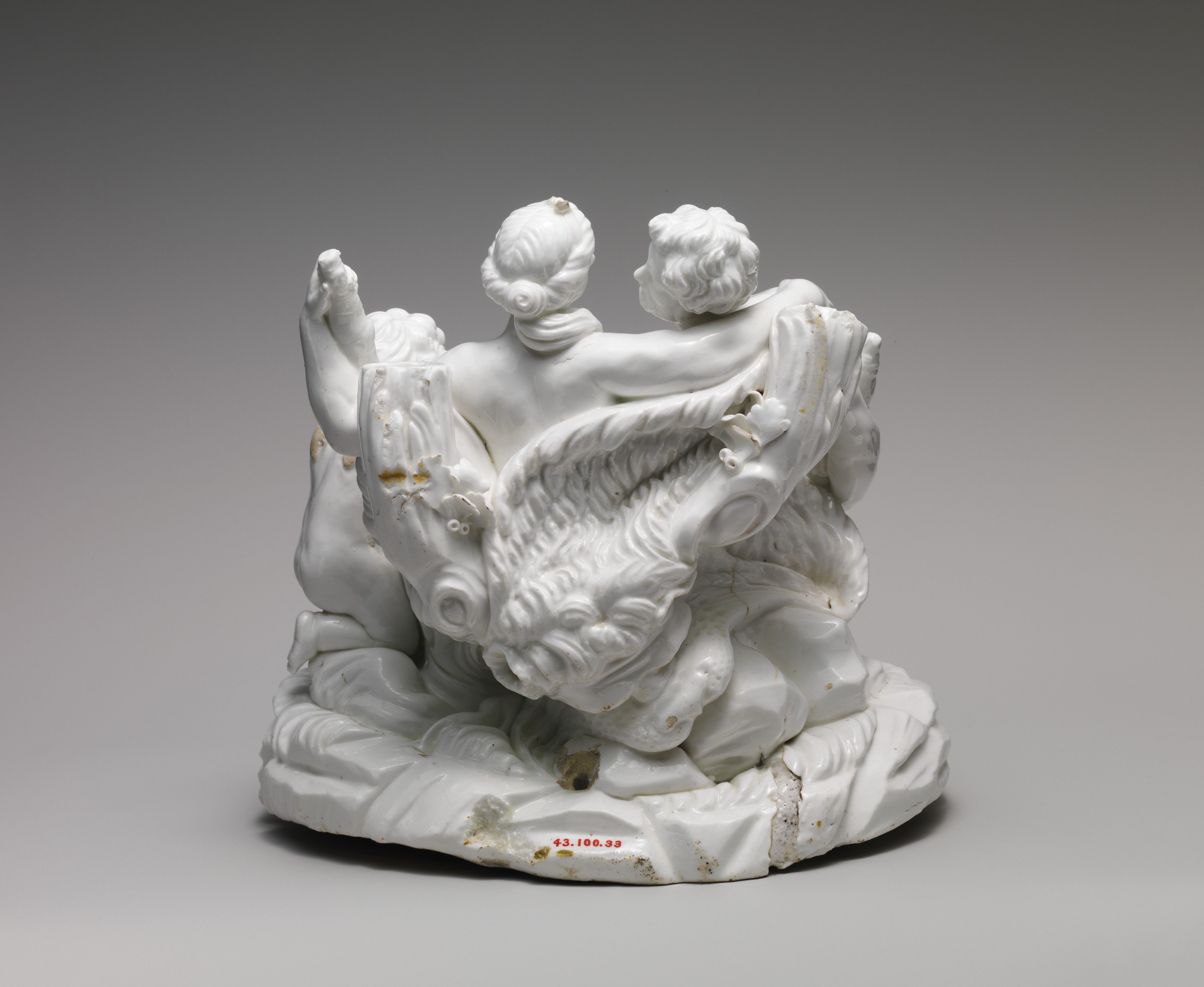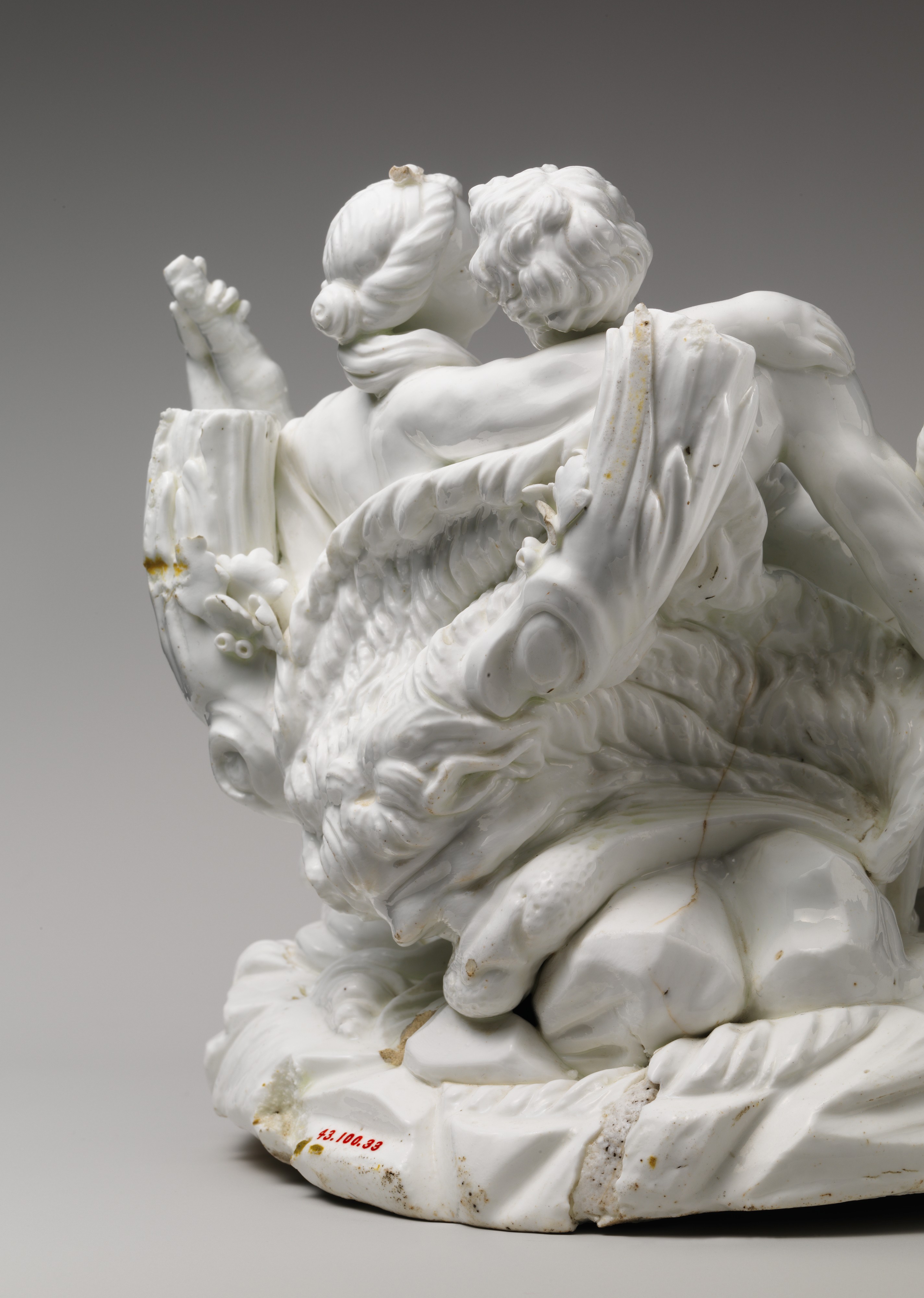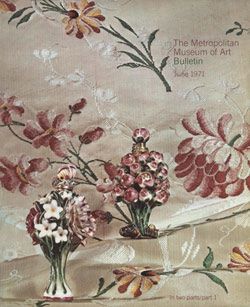Hercules and Omphale
Manufactory Vincennes Manufactory French
Probably based on a composition by François Lemoyne French
Not on view
This figure group depicting two figures from Greek and Roman mythology, Hercules and Omphale,[1] is one of the earliest sculptural models produced by the Vincennes factory. While the model first appears in the factory inventory of 1752, it seems almost certain that it was in production by the middle of 1749. On July 12, 1749, the account book of the famous Parisian marchand mercier Lazare Duvaux (French, 1703–1758) records the sale of “a large round gilt-bronze base for a Hercules made of Vincennes porcelain” to a Monsieur de Villaumont.[2] As the Vincennes factory had only recently attempted the production of sculptural figures and groups, it is unlikely that there was another model of Hercules to which this notation in Duvaux’s account book could refer. Due to its size and the complexity of its composition, Hercules and Omphale is a surprisingly ambitious work for a factory that was founded in 1740 yet began production in earnest only in the years 1745–46.
The technical challenges to a young factory posed by a sculptural group of this scale are especially evident in the partial collapse of the two primary figures, both of which lean backward to a notable degree because of a problem that occurred during the kiln firing. One result of the slumping of the figures is the compression of the head of Hercules’s lion skin, one of the legendary hero’s primary attributes. This change in the figures’ original, upright, seated positions slightly alters the composition, introducing an element of languor that was unintentional. Another significant technical flaw is apparent in the large firing crack found at the base near the back of the figure. This crack, which must have occurred in the kiln during the first or biscuit firing, was filled with very small crushed pieces of fired porcelain mixed with glaze prior to the second or glaze firing; the very visible repair suggests that the goal was simply to avert further damage rather than mask the defect, which was presumably beyond the factory’s ability at this point. The awareness at the factory that sculpting and firing a group of this size would prove difficult is evident by the use of a large supporting brace installed underneath. Made from the same clay body as the group, the brace runs from one side of the base to the other, parallel to the frontal orientation of the figures. Despite the addition of this support, the soft-paste porcelain body of this group was clearly incapable of with-standing some aspect of the firing process with complete success.
Interestingly, neither of the two other known examples of this model exhibits the same technical problems. In both the group on the Paris art market at the time of this writing[3] and the group in the Musée National Adrien Dubouché, Limoges, Cité de la Céramique,[4] the figures are fully upright in their seated positions, and the firing cracks are very minor.[5] Unlike the present example or the group in Paris, the Limoges group (inv. no. ADL9866) is mounted with a gilt-bronze, three-branch candelabrum that appears to be original to the figure, which may once also have had a gilt-bronze base of the type cited in Duvaux’s account book. The candelabrum attaches to the porcelain figure by means of the two upright cylindrical elements modeled as partially hollowed-out tree trunks found at the back of each of the three known groups. Thus, it is likely that the Museum’s group originally was mounted with a similar candelabrum, and the three holes drilled in the base may have been intended to secure a gilt-bronze base. If the holes were created shortly after the group was made,[6] it indicates that the technical shortcomings of the present example were not regarded as so disfiguring as to render it unsalable.
Figures from mythology were popular sculptural subjects for the Vincennes factory in its early years of production, and the choice of Hercules and Omphale for a figure group may have been prompted by the highly visible success of a painting of the same subject by one of France’s most successful artists, François Lemoyne (1688–1737). His Hercule et Omphale (1724) was exhibited in the Salon in 1725, having already served as inspiration for a poem published several months earlier in the Mercure de France, the influential literary journal.[7] A print executed by Laurent Cars (French, 1699–1771) in 1728,[8] after Lemoyne’s painting, further increased the popularity of Lemoyne’s composition. François Boucher (French, 1703–1770) chose the same subject matter for a painting executed in the years 1731–34, although it was never reproduced in print form, but Boucher’s drawing of a differently composed Hercule et Omphale was engraved and thus became available to a wider audience.[9]
All of the compositions of Hercules and Omphale, including the Vincennes group, give primacy to the exchange of attributes between the two figures that encapsulates the story of these two lovers. In the recountings by Ovid[10] and by Apollodorus,[11] Hercules was forced to sell himself into slavery to atone for a murder that he had committed. Purchased by the queen of Lydia, Omphale, Hercules served as both her slave and lover. Omphale’s domination of Hercules was so complete that he was rumored to have begun dressing in female attire and adopting female pursuits, such as weaving. Traditionally, Hercules is depicted holding Omphale’s distaff, used for spinning to produce thread, while Omphale holds Hercules’s club and wears his lion skin, reflecting her authority in the relationship. The modeler of the Vincennes group includes these attributes, although in this composition the two lovers rest on Hercules’s lion skin and a putto holds the spindle. Lemoyne’s painting has been cited as the source for the composition of the Vincennes group,[12] both directly and through the intermediary of Cars’s engraving. Even though there are distinct similarities between the porcelain version and Lemoyne’s composition, a number of differences exist as well, and it is difficult to determine if these differences are due to the inevitable changes required in transferring a two-dimensional image into three dimensions, or if a different source was employed at the factory. Whatever the inspiration might have been for this porcelain group, Hercules and Omphale reflects the intention at Vincennes to produce works that expanded the range of porcelain sculpture beyond anything that had been attempted in France prior to this time.
Footnotes
(For key to shortened references see bibliography in Munger, European Porcelain in the Metropolitan Museum of Art. NY: The Metropolitan Museum of Art, 2018)
1 Known in Roman mythology as Hercules, the famous hero of Antiquity, he was called Herakles by the Greeks.
2 “une grande terrasse ronde de bronze ciselé & doré d’or moulu pour un Hercule de porcelaine de Vincennes”; Courajod 1965, vol. 2, p. 25, no. 256 (entry of July 12, 1749).
3 Art Antiques London 2010, ill. p. 84.
4 Whitehead 1993, fig. 5.
5 The group in Limoges is known only through photographs and has not been examined by the author.
6 The glaze has chipped around the holes and no glaze is found within the holes, indicating that the holes were made after the final firing.
7 Bailey 1992, p. 244. Lemoyne’s painting of Hercules and Omphale is now in the Musée du Louvre, Paris (M.I. 1086).
8 Harvard University Art Museums, Cambridge, Mass. (Le Bl. 12).
9 Bailey 1992, p. 375.
10 Ovid, Fasti 2.303–30.
11 Apollodorus, The Library 2.6.3.
12 Eriksen and Bellaigue 1987, p. 196, pl. 7; Préaud and Albis 1991, p. 170, no. 168.
Due to rights restrictions, this image cannot be enlarged, viewed at full screen, or downloaded.
This artwork is meant to be viewed from right to left. Scroll left to view more.
